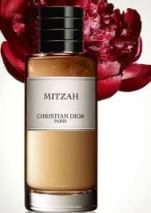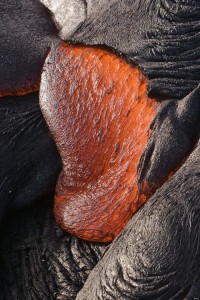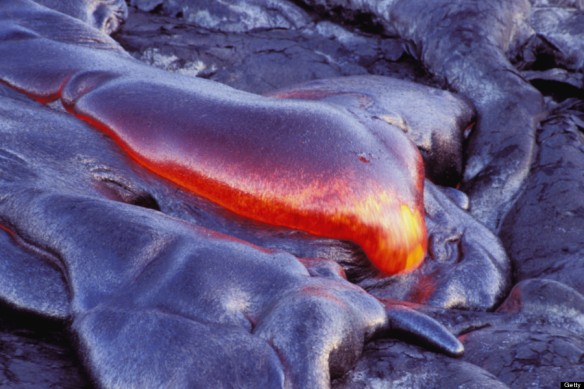
Portofino on the Italian Riviera. Source: yachtcharterfleet.com
It snowed here yesterday, after days of endless, bleak, icy greyness. For many of you, snow is hardly a big deal; for where I live, however, it’s akin to Hell freezing over. So, as a sign of rebellion, or perhaps as escapist fantasy against those miserable grey skies, I reached for Méloé, the one fragrance explicitly intended to represent “the heat of long-awaited summer days.” Mind you, I’m not all that crazy about my area’s particularly hellish version of summer, but I was suddenly in desperate need of sunshine in a bottle. And Méloé promises a “fresh haven” of all the best that the Mediterranean can offer, from Tunisian Neroli to Sicilian mandarin, from fresh basil to orange blossom and lavender.

Source: Hypoluxe.
Méloé is a creation from one of the most unsung gems in the niche world, Téo Cabanel, a Paris niche house whose history goes back over a century and a relatively unknown brand which consistently puts out extremely refined, polished perfumes. I have a huge soft spot for Téo Cabanel, as they make one of my favorite perfumes, the glorious oriental, Alahine (which is one of the few rose-based perfumes that I adore.) Alahine is fierce, potent, boozy, and with such intense spicy smolder that I often say it requires a form of Stockholm Syndrome to fall in love with it.
Méloé (which I’ll just write from here on out as “Meloe” for ease and speed) is the polar opposite of Alahine in every possible way. It’s as though Téo Cabanel intentionally sought to make Alahine’s counterpart with a fragrance that was a crisp, light, airy eau de toilette with the most easy-going nature. If Alahine takes you to a Moroccan souk spice market, and then to opulent palaces filled with lush roses and amber, then Meloe represents someone sitting in a café in Monaco wearing a cool, crisp shirt, and spritzing themselves with the aromatic cologne equivalent of a chilled lemon Perrier. They just chill and hang out, and, as the day progresses, the sun’s heat eventually brings out a musky, warm sweetness on their skin. It’s all very easy, smooth, and polished, but none of it is complicated, edgy, or heavy. It’s not meant to be.

David Niven relaxing on the French Riviera. Source: therakeonline.com
Freshness and lightness is such an intentional part of Méloé that the fragrance was even originally called Méloé Eau Légère or, in some listings, Eau Fraiche. Emphasizing the point even further, Meloe is an eau de toilette in concentration, not an eau de parfum like Alahine. Meloe was created by Téo Cabanel‘s in-house perfumer, Jean-Francois Latty, and was released in 2008.
The company describes the perfume as follows:
In the heat of long-awaited summer days, the Méloé lover has found a fresh haven. Her elegant summer signature is underlined by her light, green, fruity eau de parfum.
Méloé’s Epicurian symphony generously draws its top notes from citrus and spices. Bergamot from Calabria, mandarin and lemon from Sicily, lavender and basil play their part in perfect harmony.
The sparkling citrus notes linger until a dainty floral bouquet of Neroli from Tunisia, orange blossom and jasmine with just a touch of nutmeg comes to full bloom to make up the heart notes.
Unexpected sensual base notes of musk, amber and just a hint of woody notes. Lavish elegance and mystery, Méloé fully reveals its modern and distinctive character
Meloe is categorized as a green, fruity floral, and First in Fragrance offers the full list of notes:
Top Note: Bergamot, Tangerine, Lemon, Lavender, Basil
Heart Note: Neroli, Orange Blossom, Jasmine, Nutmeg
Base Note: Musk, Ambergris, Woods. [Some places mention “crystal moss” as a base element as well.]
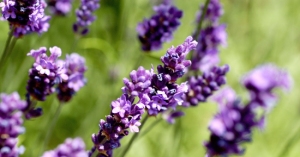
Source: 550px.com
Meloe opens on my skin with a strong blast of bitter neroli, followed by unsweetened tangerines, and crisp, zesty lemon that feels much like the oils from a peel that was freshly grated. There is also one of my most hated notes in perfumery: lavender. As many of you know, I’m a lavender-phobe, and, yet, I actually like the note here. It is sharp, but also soft. More importantly, it doesn’t smell like the revolting, dried kind with its concentrated, vicious pungency. Instead, it smells more aromatic, like the plant in nature and in bloom. The lavender weaves its way throughout the various citrus notes, and the whole thing is sprinkled with peppery elements and a good pinch of bitter nutmeg.
The overall effect is to create something that is very brisk, incredibly bright, and fresh, but also somewhat spicy. None of it feels like a “fruity floral,” thank God. That is a category of perfumes I rather dread, for the modern sort are all too often dripping with goo, syrup and sweetness. And I have to admit, for a good half of Meloe’s lifespan, I find myself perplexed by the categorization because Meloe feels like a really fantastic cologne.

Source: societeperrier.com
It’s not only the fougère-like traits of using cool lavender, citruses, green herbs, and woods, but some sort of ineffable quality that reads “unisex cologne” to me. Meloe’s fruits are refreshing and unsweetened, dominated more by crisp lemon and bitter neroli than by any heavy, sweet, juicy oranges, and the whole thing is definitely aromatic with the very dominant lavender note. Yet, it never feels masculine or akin to an old-fashioned barber-shop scent. Perhaps it’s because the lavender lacks the aggressive pungency of the sort often used in masculine colognes, or perhaps it’s because the notes are all very well-balanced. My greatest impression is of something sunny and yellow, but also chilled like Perrier — Perrier that merely happens to be infused by lemon peels, neroli, lavender, and nutmeg.

Nutmeg. Source: Kootation.com
As the minutes pass, Meloe starts to change. The nutmeg softens its early forcefulness and loses some of its bitterness, as does the neroli. At the same time, the basil makes a tiny appearance on the sidelines, but I have to confess, I wish there were more of it. It’s so subtle, I sometimes feel I’m imagining it. The tangerine feels muted, such that I’d never smell Meloe at this stage and think “orange fruits,” but I think it has an indirect effect that helps ensure the more bitter elements are kept in check.
Perhaps its subtle sweetness is why Meloe loses some of its bright zestiness after 10 minutes and starts to feel much less brisk. The lemon no longer smells like you just dug your nails into the peel and grated the skin to release bitter oils. It’s smoother, thinner, and softer. The neroli starts to turn more abstract, too. At the same time, a hint of woodiness creeps into the top notes, perhaps from the unspecified “woods” listed for the fragrance.
Whatever the reason, Meloe settles into being a much smoother, lighter, seamless blur of crisp citruses and lavender aromatics that are perfectly balanced with a quiet spiciness, subtle woodiness, and hint of bitterness. It’s odd how the notes overlap each other and feel almost as if they lack delineation, yet, when smelled up close, you can still pull things apart. By the same token, Meloe sometimes feels very thin and sheer, yet it initially projects about 3 inches above the skin and is very rich up close. I have to think that the current arctic weather in which I’m testing the fragrance is hampering it to some extent. I suspect this is one perfume that would truly bloom in the summer heat for which it was intended.

Orange blossoms via the Pattersonfoundation.org.
As some of you may have noticed, I’m in the midst of doing a series on floral fragrances, and Meloe is technically supposed to focus on orange blossoms. Well, on my skin, and perhaps due to the current freezing temperatures, the flowers don’t make an appearance until 90 minutes into Meloe’s development. Even then, they are extremely delicate. Instead of the heavy, lush, ripe, indolic sort of orange blossoms that you often encounter, the ones here feel like the young buds on the actual tree. There is a crisp, Spring-time vibe, a softness that separates Meloe’s fresh take on orange blossoms from something like Serge Lutens‘ Fleurs d’Orangers. These flowers never feel syrupy, mentholated, blackened, or concentrated. In fact, they’re quite muted and restrained. At times, there is the faintest suggestion of an expensive orange blossom soap underlying the notes, or perhaps it’s the odd sense that these flowers are virgin clean.
The actual orange fruit lurks behind the flowers, more akin now to a sliver of fresh, baby tangerine than to any bitter oils from the rind. The bitterness of the neroli has also vanished, but its slightly piquant woodiness remains. As a whole, Meloe is now primarily a very cool, thin blend of soft, clean orange blossoms, crisp lemons, and baby tangerines in an aromatic, woody nest. It still feels like a light, delicate eau de toilette that has been stuck in a refrigerator, but it’s not quite as crisp or zesty.

Source: Telegraph.co.uk
Sometimes, one has the sense that the different stages of Meloe capture the different parts of the full citrus tree. The fragrance starts first with its unsweetened fruit nestled amongst cool, waxy, bitter green leaves and petitgrain twigs, along with the equally bitter, piquant aspects of neroli and the aromatics growing all around the plant. Later, though, Meloe moves up to focus on the tree’s youthful blossoms, tossing in a dash of now sweetened baby mandarins, and a whisper of abstract warmth. As for the lavender, it is now quite nebulous in feel, adding merely a touch of aromatic freshness.

Source: fantom-xp.com
All lingering impressions of a cologne fade away at the start of the third hour, when Meloe turns into a more floral fragrance with unsweetened fruits and lingering traces of woody aromatics. The sillage slowly drops and, by the end of the 3rd hour, Meloe lies right on the skin. It becomes a skin scent about 4.5 hours in. Around the same time, the tangerine and orange blossoms surge to the foreground, taking over completely. The two notes are accompanied by a soft, musky warmth, though it never reads as actual amber to me, let alone ambergris. There are the tiniest flickers of something woody and aromatic in the background, but they are very indistinct.

Source: singer22.com
The whole thing is very soft, sheer, and pretty. It’s very simple, yes, but also elegant, polished, and easy-going. It has a very relaxed summer vibe, like someone hanging out on a boat and sipping cocktails on the Cote d’Azur after a long day in the sun. Their skin holds the tiniest traces of the crisp citrus, orange, and lavender notes of their early morning cologne, but the summer heat has evaporated their chilled freshness, leaving behind only their sweetened essences on warmed skin. In its final moments, Meloe is merely a blur of oranges with a vaguely woody feel. All in all, it lasted 10.5 hours with 3 medium-sized dabs, which is excellent for an eau de toilette.
Téo Cabanel clearly had a very specific goal and feel in mind in creating the perfume, and I think they accomplished it really well. Nothing about Meloe is uber-complicated, let alone rich or heady, but it’s not trying to be with a name like “Eau Légère.” Yet, Meloe still has more body and depth than many Eau de Toilettes that I’ve tried (not to mention quite a few eau de parfums). Plus, it’s very reasonably priced (between $50-$70 for the smallest bottle, depending on where you buy it) with moderate sillage and good longevity.
Putting all that together, Meloe comes across as straight-forward simplicity with absolutely no pretentiousness at all, something I really like a lot. Meloe may have easy affability and versatile freshness, but it is also a very polished, refined take on a summertime citric-floral. It’s not quite as simple as it may appear, and it certainly feels more nuanced than some fragrances in this genre. In fact, as compared to many commercial “fruity-florals,” especially the syrupy fruit-chouli messes that you find in department stores, Meloe is almost a paragon of sophisticated complexity.
The thing that I keep thinking of is Creed’s much-hyped Aventus, which is really another twist on a fruity-florals with aromatics. To be clear, the two fragrances are very different in terms of their flowers and fruits, as Aventus is centered on pineapple, apple, ashy birch, and citruses, among other things. Meloe is initially much more lemony, aromatic and unsweetened, with a very robust lavender that makes it fougère-like, before it later turning orange-based and warmer. In my opinion, it’s also actually much less thin, watery, and weak in projection than Aventus, and more unisex. Yet, both fragrances share the same spirit and goal of fresh, bright crispness where fruits are nestled into an aromatic, woody base. They may smell completely different, but they want the same things. And I prefer Meloe’s journey to that goal.
There are no blog reviews that I could find for Meloe, and the fragrance isn’t entered on Basenotes, so we have to rely on Fragrantica for other people’s perceptions or experiences. Interestingly, there isn’t a single negative review of Meloe. Everyone seems to enjoy it, whether it is a man who shares the scent with his wife, or women who normally can’t stand “fruity-florals.” In fact, many seem quite surprised to like it as much as they do, perhaps because Meloe really isn’t a “fruity floral” by modern standards. One commentator, “Mals86,” actually referenced colognes in her comment:
I generally struggle with citrus scents, and traditional cologne-formulas that are meant to be refreshing, like this one. But I found it light and pleasant, and indeed very refreshing: not too floral, not too lemony, not too fleeting. [¶] It was even better on my daughter, and makes a wonderful alternative to the fruity-syrupy stuff her friends are wearing.
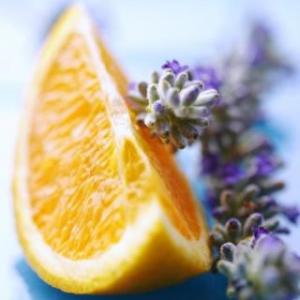
Source: Chef Keem at chefkeem.squidoo.com
Another poster barely realized there was citrus in the perfume, and notes how well Meloe is blended:
Like Mals86 I always feel that citrus and I are no friends. But I got a sample today and tried it without knowing about the citrus. [¶] Well…citrus didn’t even come to my mind! I guess that it is because it is so very well blended with all the other notes that I wouldn’t detect it…
Might well be that the lavender calms down the citrus and spices and that, on the other hand, the citrus and spices lift up the lavender… [¶] Lavender on it’s own can be quite dull as if it was meant as an invitation to sleep without any dreams promised… [¶] Here dreams come alive while serenity remains… [¶] The amber warms up within the sillage so these dreams soon will float on the air that you’ll be happy to breath…
Smelling it, I see bright white clouds against a clear blue sky, I see Dolphins jump up out of turqouise coloured water with their friendly, smiling faces. [¶] Beautyful fragrance…
For everyone else, the citric burst was clear from the start, though some found it more fruity and sweetened than purely lemony crispness:
- Méloé is obviously a great harmonic summer signature scent with spicy citric carnival in the beginning and intriguing soft light green fruity floral vibe with a naughty bread’ish faint sub-scent that tickles me! [¶] Without any hint of classic perfumery, it stand some steps higher than every fresh feminine perfume I know. The quality of citruses and lavender is superior. [¶] Méloé is chic, first class, easy going, generous and rich..
- MELOE is like a windy summer day, it started with a sugary citrus and mandarin orange combo with bits of neroli and orange blossom. It was not too sweet, but more fresh fruity. The heart arrived with warm jasmine and amber. It dries down to a beautiful amber/citrus base, very light, but noticeable. [¶] I think MELOE is a very good floral fruity choice for summers for those who are too tired for synthetic mess most current floral fruity perfumes offer. This is a nice, natural, breezy and simple perfume
In terms of sillage, everyone notes that the perfume isn’t “overpowering,” and one person said the projection was “minimal,” with Meloe soon turning into a skin scent. For longevity, most people voted for “long lasting” (7h-12h) in terms of duration, and one commentator mentioned that it lasted 8 hours on her skin.
As everyone notes, Meloe is simple and breezy. It’s the furthest thing from challenging, bold, or edgy, and definitely not an original take on either colognes or fruity-florals. But it’s not trying to be any of those things. All it wants to do is to deliver a very elegant, polished take on a traditional genre. As Téo Cabanel told the Sniffapalooza magazine, their goal is create
scents in the true French perfume tradition, to rediscover the concept total sophistication. We take the greatest care in offering high quality products. The name Téo Cabanel is a promise of the quality of our essences and the elegance of our bottles and packaging. Our perfumes deserve the finest natural elements, 100% pure and natural.
For the price, I honestly don’t think you can beat Téo Cabanel for great perfumery with a very classique, elegant feel at a bargain price. It is one of the most unpretentious brands I’ve encountered, with zero flash and a lot of substance. They quietly dedicate themselves to creating high-quality, polished products in the French tradition, and just hope that someone notices. In fact, they seem quite humble about it all.
In the specific case of Meloe, I think if perfume were offered under the Creed or Tom Ford label, people would be falling all over themselves and proclaiming that they had found their new summer scent. It is definitely unisex, versatile, and something you could wear to the office. It is also simple, but it certainly feels richer to me than Tom Ford’s very bland citrus offerings in the new Atelier d’Orient line. And I won’t even start on the issue of Aventus, or some of Hermès’ colognes.
In short, whether you’re looking for year-long freshness, summer in a bottle, or an escape from “the heat of long-awaited summer days,” I definitely recommend that you give Meloe a sniff.
DETAILS:

All the Téo Cabanel fragrances in a sample set. Source: Téo Cabanel e-store.
Cost & Availability: Meloe is an eau de toilette that comes in a 50 ml/1.7 oz size that retails for $70 or €50, or a 100 ml/ 3.4 oz bottle that costs $110 or €80. You can order Meloe directly from the Téo Cabanel website (which also has a French language version), along with a Sample Set of all 7 Cabanel fragrances in 1.5 ml vials for a set price of €8.50. (There is also a 9 ml rollerball of Meloe that costs $28, but that isn’t commonly available except from the company.) In my opinion, the best place to get Meloe right now is also the cheapest: eBay! You can find the 1.7 oz/50 ml bottle of Meloe in the old glass bottles for as low as $50, while the larger 100 ml bottles go for around $75.
In the U.S.: Téo Cabanel’s U.S. retailer is Luckyscent which now carries four of the Téo Cabanel line, but Meloe is not one of them. The reason is that Téo Cabanel’s U.S. distributor is waiting for summer to bring out Meloe, and I’ll update this post when it does. It was actually extremely difficult for me to find an online vendor (outside of eBay) that currently carries this particular perfume. The Posh Peasant seems to have it, but it’s unclear to me if they are sold out. All their entries have the word “Sold” next to it. For those of you near Minneapolis, there is a store that already carries Meloe, but it does not have an online e-boutique. It is “La Petite Parfumerie” and the phone number is: (952) 475-2212 or you can email at orders@lapetiteparfumerie.com.
Outside the US: In Canada, Cabanel’s website lists Fritsch Fragrances as its primary vendor. In the UK, Téo Cabanel is usually carried at Fortnum & Mason’s, but I don’t see it shown online. Liberty’s sells Meloe in the 100 ml bottle for £75, and ships throughout the EU. Germany’s First in Fragrance sells Meloe for €50 or €80, depending on size. Another European vendor is Natural Skincare Emporium which sells the 50 ml bottle of Meloe for €59. In Denmark, Happel carries the entire Teo Cabanel line, including Meloe. I’ve also read that the perfumes are available at: the Hotel George V in Paris, Les Galleries Lafayette, Douglas (France, Lithuania, Russia) Kadewe Berlin, Oberpollinger Munich, and Albrecht in Frankfurt. For all other countries or specific cities, you can use the company’s Store Locator guide on their website.
Samples: Meloe is unfortunately not one of the Téo Cabanel scents carried by Surrender to Chance. However, the Posh Peasant Sampler Set which includes 5 of the Téo Cabanel scents, including Meloe and my beloved Alahine, starting at $15 for 1 ml vials. The other option is to order from Téo Cabanel website with their more complete, larger sized sample set that includes the new amber oriental release, Barkhane as well.





















